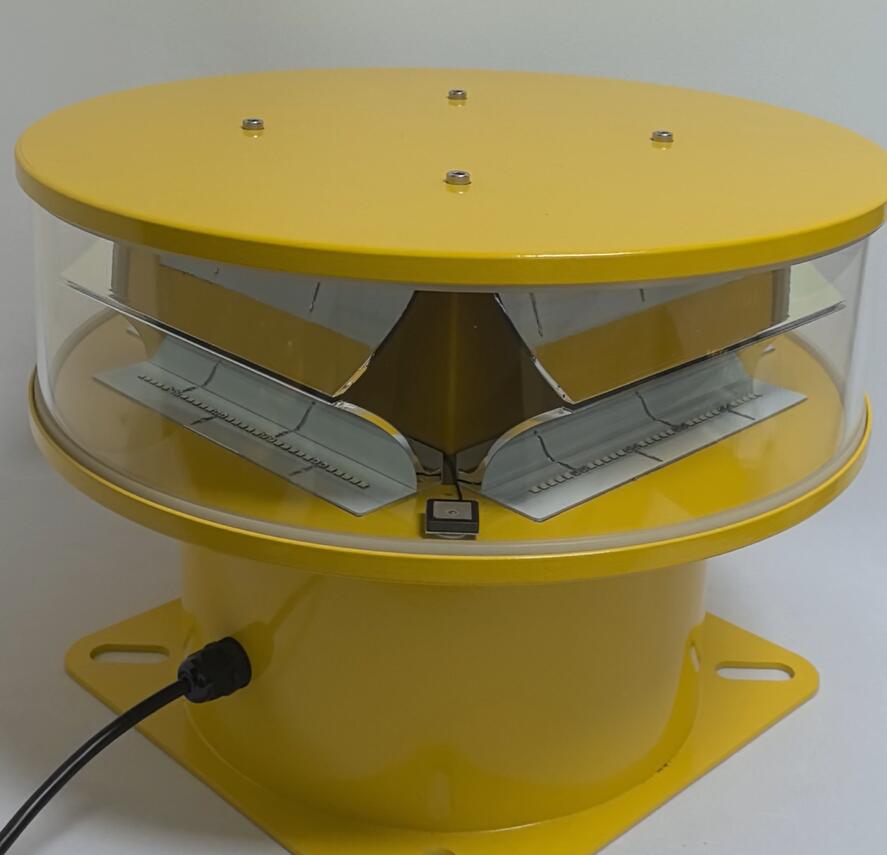In the realm of aviation, where the skies are a complex web of flight paths and countless aircraft crisscrossing at high speeds, there exists a silent yet crucial component that often goes unnoticed – the aircraft warning light system. This unassuming yet essential technology plays a vital role in ensuring the safety of air travel and safeguarding the lives of passengers, crew, and those on the ground.
The aircraft warning light system is designed with a singular purpose: to make aircraft visible in all conditions. Whether it's a clear day with bright sunlight or a pitch-black night with low visibility, these lights act as beacons, alerting other pilots and people on the ground to the presence of an aircraft. The system consists of various types of lights, each with its own specific function.

One of the most important components of the aircraft warning light system is the anti-collision light. These bright, flashing beacons are designed to catch the attention of other pilots and act as a warning sign. They are typically located on the top and bottom of the aircraft and can be seen from a great distance. The anti-collision light is especially crucial during periods of low visibility, such as at night, in fog, or during heavy rain. By flashing brightly, it alerts other aircraft to the presence of a nearby plane and helps prevent potential collisions.
| Aircraft Warning Light System | ADS |
In addition to the anti-collision light, aircraft are also equipped with navigation lights. These lights are used to indicate the position and direction of the aircraft. The navigation lights consist of a red light on the left wingtip, a green light on the right wingtip, and a white light on the tail. These standardized colors help pilots identify the orientation of other aircraft and ensure safe separation during flight. The navigation lights are essential for maintaining order in the skies and preventing mid-air collisions.
Another important aspect of the aircraft warning light system is its role in ground operations. When an aircraft is taxiing on the runway or parked at the gate, the warning lights help ground crew and other personnel identify its location. This is particularly important in busy airports where there is a constant flow of aircraft and ground vehicles. The lights also serve as a warning to people on the ground to stay clear of the aircraft and avoid potential accidents.
The aircraft warning light system is not only important for safety but also for regulatory compliance. Aviation authorities around the world have strict requirements regarding the installation and operation of warning lights on aircraft. These regulations are in place to ensure that all aircraft are visible and identifiable, reducing the risk of collisions and enhancing overall safety. Manufacturers and operators must adhere to these standards to ensure the safety of their flights and the well-being of those on board.
Despite its importance, the aircraft warning light system is often taken for granted. We seldom think about these lights until we see them flashing in the night sky or notice them on an aircraft as it passes overhead. However, without this essential technology, air travel would be much more dangerous and unpredictable.
In conclusion, the aircraft warning light system is an unsung hero of the aviation world. It works silently in the background, ensuring the visibility and safety of aircraft in all conditions. From anti-collision lights to navigation lights and ground operations, this system plays a crucial role in safeguarding the lives of millions of people who travel by air each day. As we look to the future of aviation, it is essential that we continue to invest in and improve this vital technology to ensure the safety and efficiency of air travel for generations to come.